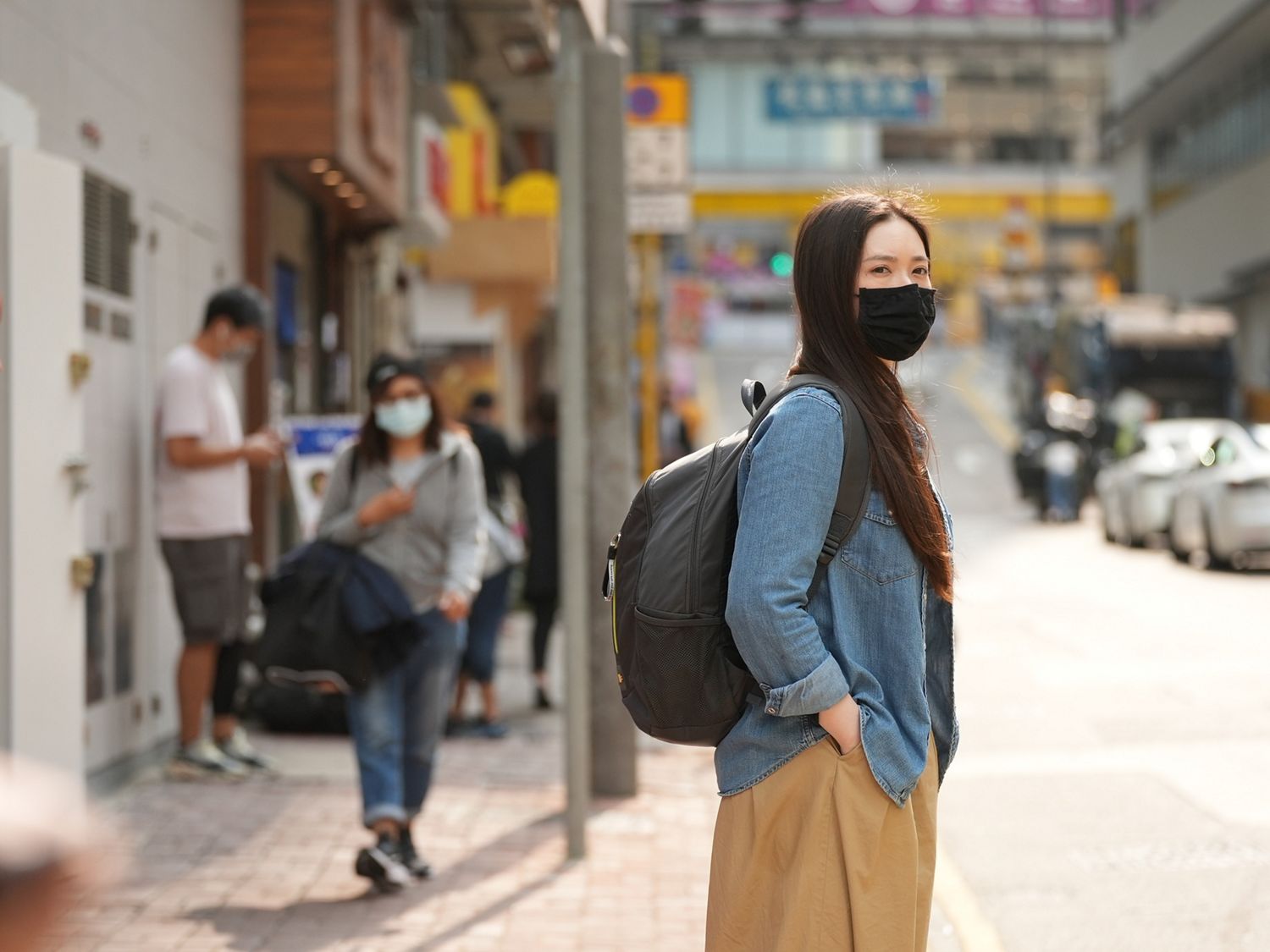Eco-Enthusiast investigates air pollution exposure in Hong Kong
Dyson’s air quality backpack measures personal air pollution exposure during a two-day tour of the city.
14 June 2021
-
-
Hong Kong 14 June 2021 – Navigating the streets of Hong Kong with Dyson’s air quality backpack, eco-enthusiast Melody Cheng is one of a group of individuals across the globe who are working with Dyson to learn more about their air pollution exposure in their home cities.
Re-working existing technology used in Dyson air purifiers, the Dyson air quality backpack is a portable air sensing device which collects air pollution data on the move. With on-board sensors, a battery pack and GPS, Dyson hopes to use this sophisticated technology to offer insights into personal exposure to air pollution and how to avoid it.
“It’s fascinating to understand more about the air quality around me in my daily work and leisure routine. Hong Kong people are increasingly concerned over air quality, but they are not actually aware of the pollutants that they might be exposed to as they go about their daily life, and the health implications of air pollution. Dyson’s air quality backpack collected air quality data throughout my two-day trip, allowing me to understand what activities and pollution events contributed to my overall pollution exposure.”
- Melody Cheng
-
The backpack measures personal exposure to pollutants including PM2.5, VOCs and NO2. Activities such as eating out at a streetside restaurant, using hand sanitiser and visiting a temple contributed to higher levels of pollution. Numerous daily activities cumulatively contribute to an individual’s personal air pollution exposure.
When asked about Dyson’s findings, Melody said: “I was surprised by how much our daily behaviours can impact the quality of the air we breathe. This shows that to some extent, we can take control of our personal exposure to air pollution. The increase in pollution when using certain personal care products, and the rise in PM2.5 while sitting at a restaurants wasn’t something I expected and I’m definitely planning to pay more attention to my behaviours indoors and in public spaces to try to reduce my overall exposure.”
Dyson engineers analysed Melody’s findings by pairing the air sensor and GPS data from the backpack with diary entries documenting her activities. This allowed them to understand what may have caused air pollution events and how she might be able to lower her exposure in the future.
-

-
Alex Knox, Vice President of Environmental Care at Dyson, said: “Our engineers have developed intelligent sensors using knowledge derived from years of experience and research in air cleaning technology. Using our unique algorithm to process detailed reports of air pollution exposure, this innovative portable air sensing technology allows us to monitor air quality indoors, outdoors and on the move. What’s more, it all fits within a backpack.”
-
Melody's Results¹
PM2.5 pollution was detected throughout the two-day study, often concentrated in areas where combustion was taking place. On the first day, when Melody visited a small café, the deep-frying of food taking place in the space caused a significant spike in PM2.5, with levels rising by 164%[1]. A similar spike was apparent when she passed a street food stall, which may have been caused by the burning of coal and release of airborne particles. A subsequent trip to the temple saw PM2.5 levels increase by more than 63 times[2] likely due to the burning of incense inside the space. In indoor spaces where these is limited ventilation, pollution can build up overtime, increasing exposure.
Further PM2.5 exposure was detected when Melody walked through Hong Kong’s Central Business District, with levels registering as ‘very poor’ on the Dyson Air Quality Index (AQI)[3] . Diesel vehicles, including buses and minibuses, are a common source of street-level pollution in urban Hong Kong. This can lead to the ‘Street Canyon Effect’ whereby surrounding buildings trap roadside emissions within a space, causing levels to build during busy periods.
Meanwhile, hand sanitizer was another source of temporary exposure to air pollution, leading to the release of VOCs, which registered as ‘very poor’ on the Dyson AQI scale. VOCs is a collective term for gases released from a wide range of sources. They are often associated with aerosolised personal care products such as hair and hand spray and cleaning products.
Low levels of pollution were recorded when Melody went jogging near the Tuen Mun River. Here, the average AQI level was very low with PM2.5 levels decreasing by 90% relative to the daily mean. This may be due to there being less vehicles, traffic and road dust nearby. Spending time in open spaces away from heavy traffic and city pollution sources is an effective way to help reduce personal air pollution exposure.
-
Backpack results, impact and ambition
The air quality backpack was initially developed by Dyson engineers for the Breathe London study with Kings College London and the Greater London Authority. As a result of the study findings, 31% of the children said they would change the way they commute to and from school. The ambition is to use Dyson’s air quality backpack to empower individuals to actively reduce their personal air pollution exposure through global projects that raise awareness about air quality around the world.
In 2019, Dyson conducted the Healthy Air study in Hong Kong with the goal of understanding the invisible pollutants lurking in households and schools. 66 air purifiers were placed in 44 participating families and 11 primary schools across the city. After six months, Dyson collected and sent 51 filters to a third party laboratory for further testing and analysis. It was found that the average bacteria count in school filters was more than in domestic settings. Every single sample filter from the study found formaldehyde, the majority in unsafe concentrations. The results were shared to raise awareness of indoor air quality for people in Hong Kong.
[1] The data was collected from 12th to 13th March 2021 using Dyson’s air quality backpack. Particulate matter is measured using micro-grams per metre cubed (µg/m³) and VOC and NO2 are measured using parts per billion, ppb. Average concentrations were measured using the time period associated to the activity. AQI refers to the air quality index used for Dyson purifier machines.
[2] Relative to daily mean recorded.
[3] Relative to daily mean recorded.
[4] According to the Dyson Air Quality Index scaled used for Dyson Purifier machines.
Press contacts
-
Liv Thomas
-


.jpg?$responsive$)




